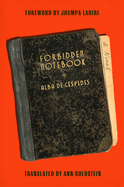
Times have changed for women since the 1950s, as the protagonist of Alba de Céspedes's excellent Forbidden Notebook, first published in 1952, confides to the titular diary. That title, rendered from the Italian by translator Ann Goldstein, offers a clever double meaning that encapsulates 43-year-old Valeria Cossati's predicament: she is forbidden from pursuing a more rewarding life and confides those frustrations only to a secret notebook. In November 1950, she buys the notebook--"black, shiny, thick, the type used in school"--from a tobacconist's shop. The clerk hastily gives it to her with the admonition "Hide it under your coat" in order to ensure that the guard stationed outside doesn't catch her.
The need for perpetual caution is at the center of the stories Valeria chronicles over the next six months. When she isn't changing the notebook's hiding place to make sure no one finds it, she writes of her 20-year-old daughter, Mirella, who stays out late and dates a wealthy, much older lawyer; her son, Riccardo, who harbors old-fashioned views of women's roles; Guido, her boss, with whom she's infatuated; and her banker husband, Michele, whose attempts to produce a movie script highlight his dissatisfaction with his career and his marriage. In a foreword, Jhumpa Lahiri compares de Céspedes's "radical novel" to Virginia Woolf's A Room of One's Own and says it, too, "vindicates, artfully and ardently, a woman's right to write." Forbidden Notebook is a sly indictment of marriage and generational conflict, as relevant today as it was in postwar Italy. --Michael Magras, freelance book reviewer

